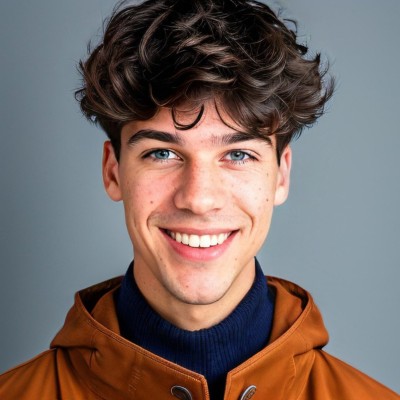 Florian S.
Florian S. Luca Dalla C.
Luca Dalla C.Cryptocurrency trading has evolved significantly over the years, with traders constantly seeking new ways to gain an edge in this highly volatile market. One of the techniques gaining popularity is Sentiment Analysis, a process that involves analyzing market sentiment to make informed trading decisions. In this article, we’ll explore the world of Sentiment Analysis in crypto trading, its ease of use, automation possibilities, and even take a look at how DipSway is optimizing AI-driven trading bots for the best results.
How to do sentiment analysis in trading?
Sentiment Analysis in trading involves analyzing social media, news articles, and other sources of information to gauge the overall sentiment surrounding a particular cryptocurrency or the market as a whole. Traders use natural language processing (NLP) techniques to extract relevant data and sentiment scores, which are then used to make trading decisions.
Is sentiment analysis easy?
While sentiment analysis can be complex due to the sheer volume of data to analyze, it has become more accessible to traders thanks to advanced AI-powered tools. Tools that offer sentiment analysis capabilities make it easier for both novice and experienced traders to leverage sentiment data effectively.
Can sentiment analysis be done manually?
Yes, sentiment analysis can be done manually. You can learn about the market situation via popular social medias like Twitter, and you could also follow big news outlets like CoinDesk, CoinTelegraph, BeInCrypto, etc. Analysts assign sentiment scores to the data based on their judgment, typically using a scale like positive, negative, or neutral. However, manual sentiment analysis is time-consuming and subject to human bias, making it less efficient and potentially less accurate than automated methods.
Can sentiment analysis be automated?
Indeed, sentiment analysis can be automated, and automation has become increasingly prevalent in the field. Automated sentiment analysis relies on natural language processing (NLP) and machine learning techniques to process and analyze large volumes of textual data quickly. It can categorize sentiment on a scale from highly positive to highly negative, allowing for real-time insights. Automation is valuable for traders as it enables them to react swiftly to changing market sentiment and make data-driven decisions.
Which algorithm is best for sentiment analysis?
The choice of the best sentiment analysis algorithm depends on the specific context and data source. Several algorithms are commonly used in sentiment analysis, including:
-
Rule-Based Algorithms
These algorithms rely on predefined rules and dictionaries to classify sentiment based on keywords and phrases. They are simple but may lack nuance.
-
Machine Learning Algorithms
Supervised machine learning algorithms, such as Support Vector Machines (SVM), Naive Bayes, and Recurrent Neural Networks (RNNs), are commonly used. These algorithms learn from labeled training data and can capture more complex patterns in sentiment.
-
Lexicon-Based Algorithms
Lexicon-based algorithms use sentiment lexicons or dictionaries to assign sentiment scores to words in text. They tally up scores to determine overall sentiment.
-
Deep Learning Models
Deep learning models like Convolutional Neural Networks (CNNs) and Long Short-Term Memory (LSTM) networks have shown promise in sentiment analysis tasks, particularly for capturing context and nuances.
The best algorithm depends on the specific goals and the quality of the data being analyzed.
Which AI is used for sentiment analysis?
Artificial intelligence (AI) plays a crucial role in sentiment analysis. AI-driven approaches, particularly machine learning and deep learning, are commonly used to perform sentiment analysis. Natural language processing (NLP) techniques are at the core of these AI systems. These AI models are trained on vast datasets to recognize patterns, sentiment-bearing words, and context, allowing them to analyze and classify sentiment in textual data accurately. Additionally, AI systems continually adapt and improve their performance as they encounter more data, making them a valuable tool for sentiment analysis in various domains, including cryptocurrency trading.
Does DipSway bot use sentiment analysis?
While DipSway’s primary focus is on AI-driven crypto trading bot for spot trading, it currently does not offer sentiment analysis as a standalone feature within the bot. However, DipSway users can still achieve the best results thanks to the in-built strategy mixed with a Walk Forward Optimization approach (AI). Combining that with our platform’s crypto performance table, which provides insights into the best-performing users bots past data. You can view crypto best performances by DipSway’s user bots here.

If you’re interested in optimizing your DipSway AI bot for maximum performance, be sure to check out our blog on “How to Optimize Your AI Bot” here.
In conclusion, Sentiment Analysis is a powerful tool in crypto trading that can provide valuable insights into market sentiment. While DipSway bot isn’t integrated with sentiment analysis yet, its AI-driven trading bot is designed to help you achieve the best results in the cryptocurrency market. By leveraging DipSway’s user-friendly interface and automated trading capabilities, you can put your crypto trading profits on autopilot and stay ahead of the market volatility.
DipSway uses a combination of 121+ technical indicators, and 17+ pattern detectors to give you an unfair advantage.
a single trade @ March 11 2024